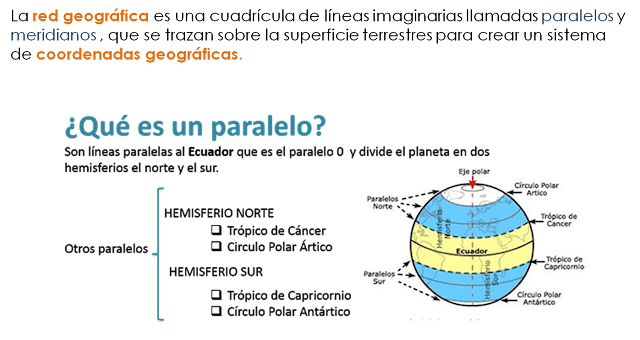D. Answer the following questions. Find each answer in the point 1:
1. What is the position of the Earth relative to the sun?
2. What is the earth like?
3. What is the vital element for life on
earth?
4. What is the earth made up of?
5. Why is there life on earth?
2. ¿Qué es el Universo?
3. ¿Qué es el sistema planetario?
4. ¿Cuál es el satélite de la Tierra?
5. ¿Qué es un planeta?
6. ¿Qué es una estrella?
7. ¿Cuáles son los planetas rocosos y cálidos?
8. ¿Cuáles son los planetas gaseosos y fríos?
9. ¿Cuáles nuestra galaxia?
10. ¿Cómo se llama la estrella de nuestro sistema solar?
1.
¿Qué es la red geográfica?
2.
¿Cuál es el paralelo 0?
3.
¿Qué es un paralelo?
4.
¿ ¿Qué es un meridiano?
5.
¿Cuál es el meridiano de
referencia?
6.
¿Qué es la latitud?
7.
¿Qué es la longitud?
8.
¿Cuál es la dirección de la
latitud?
9.
¿Qué son las coordenadas
geográficas?
10.
¿Cuál es la dirección de la
longitud?

D. Answer the following questions. Find each answer in the point 4:
D. Answer the following questions. Find each answer in the point 5:
1. 1. What is the revolution?
2. How long does it take for the earth to turn around the Sun?
3. What are the effects of
Revolution?
4. What are the solstices?
5. Complete
de table:
|
Equinoxes |
Solstices |
|
|
|
1. 1. ¿Qué es la Cartografía?
2. ¿Cómo se clasifican los
mapas?
3. ¿Cómo se clasifican los mapas según su información?
4. ¿Qué es un mapa a gran escala?
5. ¿Cómo se clasifican los mapas según su tamaño?
6. ¿Qué es un mapa topográfico?
7. ¿Qué son los mapas temáticos?
8. Escribe dos ejemplos de mapas a gran escala.
9. Escribe dos ejemplos de mapas topográficos.
10. Escribe dos ejemplos de mapas temáticos.
- TEMARIO UNIT 5: THE EARTH AND IT REPRESENTATION
- TEMARIO PRA IDEAS CLARAS UNIT 5: THE EARTH AND IT REPRESENTATION
























